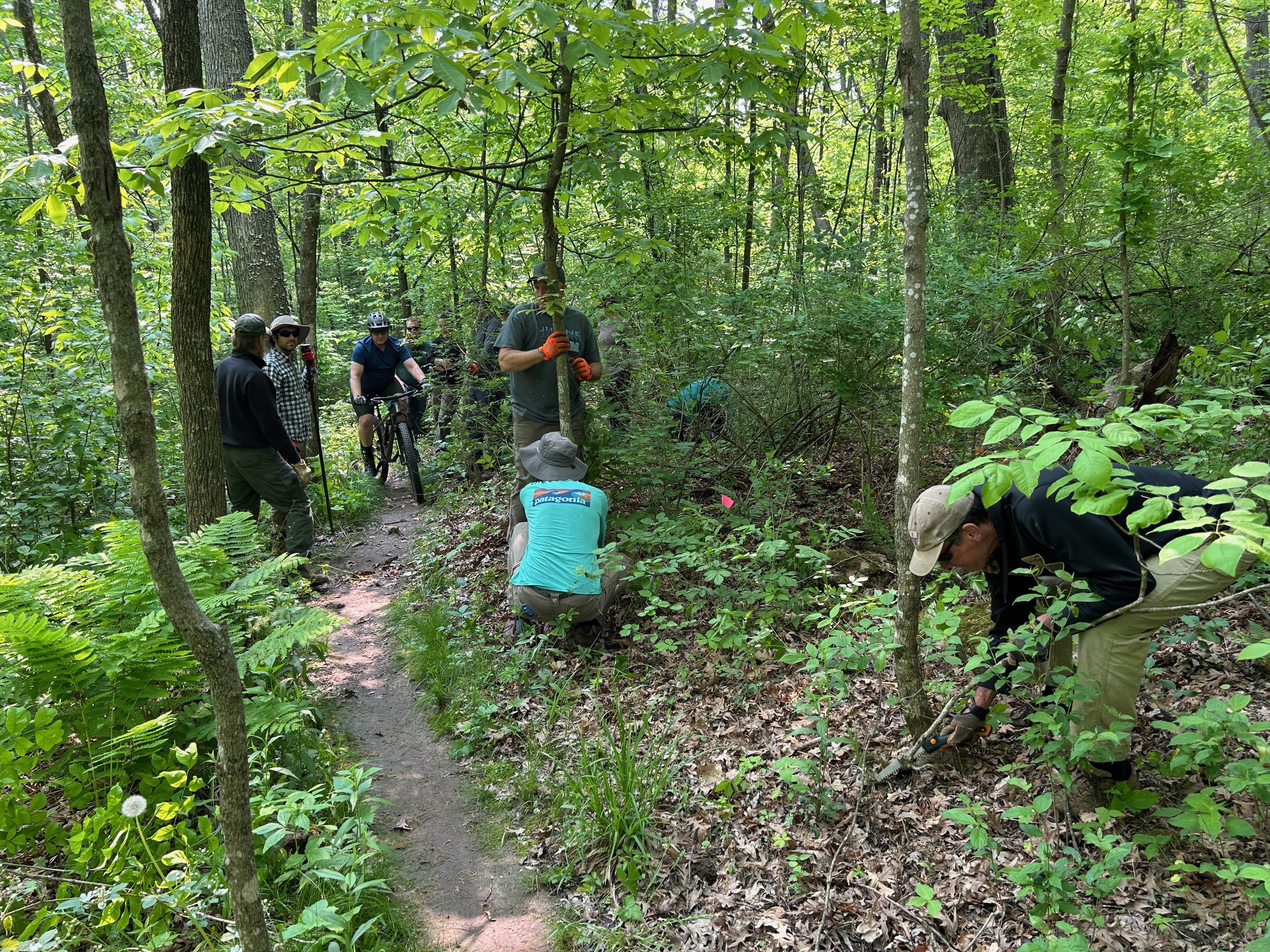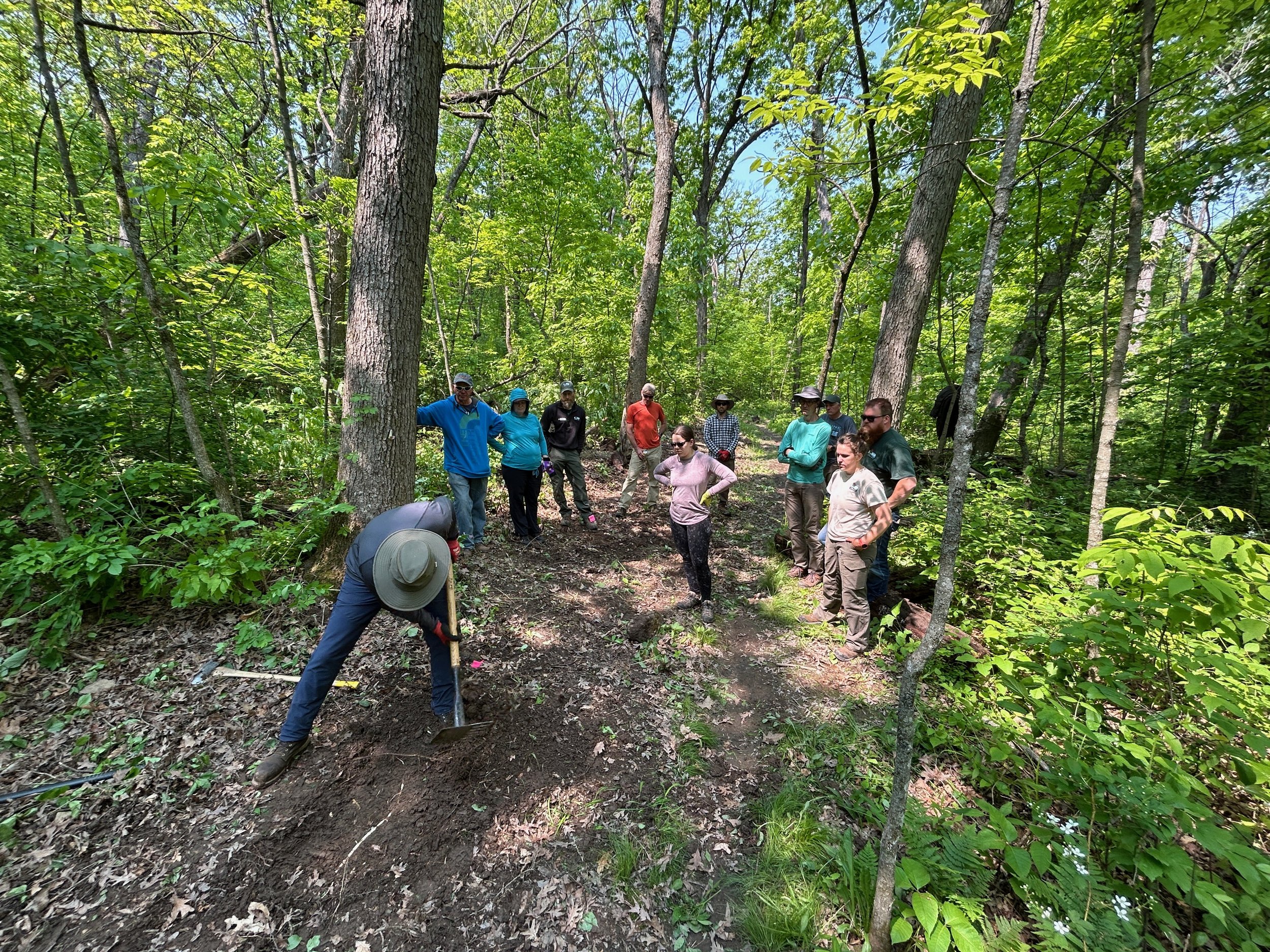CORP Trails Teams Up with DNR for Trail Building Workshop
On May 31 and June 1, trail enthusiasm ran deep at Blue Mound State Park, where CORP Trails and the Wisconsin DNR teamed up to host a hands-on, two-day trail building workshop. With four DNR staffers (including the park’s property manger) and eight CORP Trails volunteers in attendance, the weekend was all about getting dirty and learning what it takes to build and maintain sustainable, (and when necessary, challenging!) singletrack.
A rider squeezes through the existing trail as class participants begin clearing corridor for a re-route to eliminate a muddy stretch on Holy Schist. Moving the trail several feet up the slope allows water to drain off the trail tread.
Led by Mike Riter of Trail Design Solutions, the group got into the nitty gritty of water management, trail alignment, and stacked loop layout—a design strategy that helps riders of all abilities access terrain that fits their skill level.
Participants also had the chance to get hands-on with classic trail tools like the Pulaski (part axe, part hoe—perfect for cutting and digging through stubborn ground), and the McLeod (a combo rake/hoe that’s a dirt-sculpting superhero for finishing work). Knowing when and how to use each tool effectively is critical to building sustainable trails that can stand up to both weather and wheels.
Mike Riter of Trail Design Solutions demonstrates cutting trail tread to the class. Mike began teaching trail building as part of the original IMBA Trail Care Crew in the early 1990s.
But beyond the dirt and sweat, the workshop was also about collaboration. By bringing together public land managers and trail volunteers, CORP Trails and the DNR are investing in a shared vision of quality trail access across Wisconsin. It's a partnership that ensures trails aren’t just built—but built to last.
Teams work in pairs grubbing saplings in the new corridor indicated by the pink pin flags.
“This kind of knowledge-sharing is what makes our trail systems better every season,” said one volunteer. “It’s great to see the DNR and volunteers learning side by side. We’re all here to make trails more fun, more sustainable, and more accessible.”
One volunteer cuts trail tread with a Pulaski (cutting tool) while the other waits her turn to clear the spoils off the trail with a McLeod (finishing tool). This tag-team approach gives each volunteer a short break as they wait for one another.
Blue Mound is already home to some of the most challenging and beloved trails in the region, and workshops like this one help ensure the future of those trails is as solid as the bedrock they’re built on. This means applying trail techniques that preserve the challenges that make Blue Mound unique and create a destination for riders outside the area.
Look for volunteer opportunities on our event’s page of corptrails.org.




